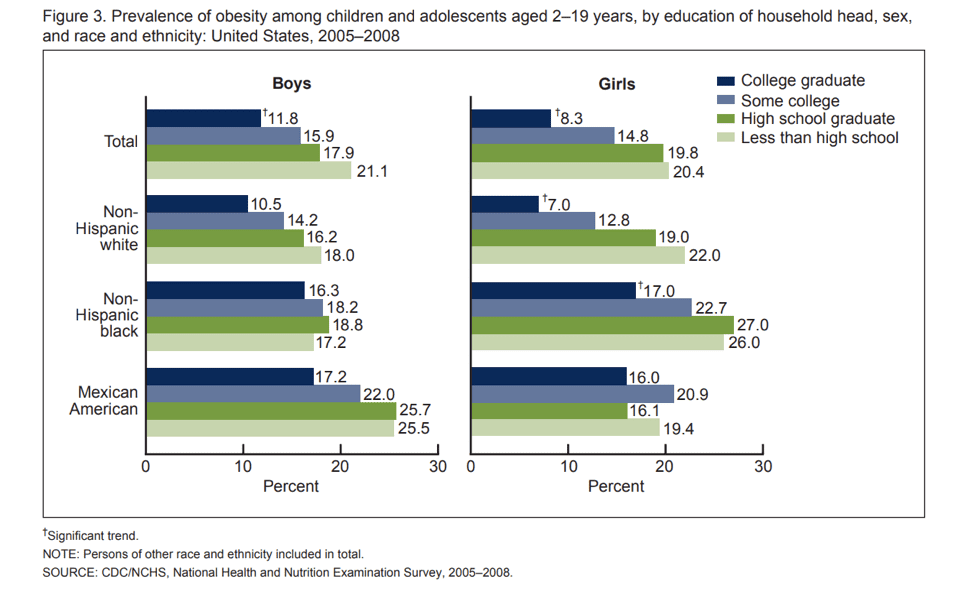By Molly C. Herndon
Studies have shown a positive correlation between good health and higher income. That is people who earn more money tend to have less disease and better health, overall. Poor health and higher rates of disease are associated more with those in lower income groups.
Those living in low-income households are less likely to have health insurance or access to medications and treatments that can treat chronic health conditions. Low-income families also have less access to preventative and specialty care. Even after the implementation of the Affordable Care Act, 27 million Americans remain uninsured (Khullar 2018).
Even mental health has been found to be affected by income with families that earn less than $35,000 reporting feeling nervous four times as often as families that earn more than $100,000 annually (Woolf 2015).
Perhaps the most striking statistics around health and wealth are those related to life expectancy. Since the 1970s, those in the higher end of the tax bracket have seen their life expectancies increase by more than 6 years, while those in the lower end have seen an increase of only 1.3 years (Woolf 2015). In fact, a study found that citizens living just 350 miles apart in some US cities have drastically different life expectancies. In McDowell County, West Virginia, men can expect to live to age 64, and in Fairfax, Virginia, men can expect to live to age 82 (Weng 2013).
It’s no surprise that individuals with higher income can afford gym memberships and have more time for improving their physical health. Higher paying careers are also more likely to provide comprehensive health insurance. We also know that nutritious food, such as fresh fruits and vegetables, cost more than calorie-dense, inexpensive, ready-to-eat meals.
Race
The health effects experienced by low income households are more harshly felt by minorities. In 2012, the median household income of an African American family was $33,321 and $39,0005 for Hispanic households. And indeed, minorities experience higher rates of disease than non-Hispanic whites (Woolf 2015). Additionally, a 2019 study found that wealthy black Americans have shorter life expectancies than wealthy white Americans, and that a black male child in a wealthy household is more likely to become poor as an adult than a wealthy white male (Khullar 2018).
High rates of disease and poverty among minority groups are certainly connected. One study linked a decline in mental health among minorities to low income levels as well. Hector Myers, Ph.D., says that racism increases the vulnerability of those already struggling with low socioeconomic status. This in turn affects both psychological and biological pathways and undermines health and well-being among minorities (Clay 2001).
Children
Research has shown the effects of poverty and how it impacts children. Those effects last well into adulthood and can impact future generations too. For example, children who grow up experiencing Adverse Childhood Events (ACEs) are more likely to smoke as adults (Woolf 2015).
Among the compounding generational effects of poverty, researchers also point to education. Children living in poverty are less likely to complete college than children of high-income parents, and this education gap continues to widen over time (Woolf 2015).
In 2007, 17% of minors in the United States were found to be obese, which has lasting health impacts into adulthood, including high blood pressure, diabetes, and psychosocial problems. Low-income children are more likely to be obese than those in higher income brackets (Ogden 2010). Educational level of parents is also negatively associated with obesity levels among children.

From CDC/NCHS. National Health and Nutrition Examination Survey, 2005-2008
Solutions
A 2017 report found that early childhood programs focused on early care, education, and parent education have positive impacts on the emotional, behavioral, cognitive achievement, and health of children. Other studies have shown that positive outcomes are associated with programs designed to give families housing stability. In one study, people who were moved out of low poverty neighborhoods were found to earn higher salaries as adults. The study found those who were moved earned 31 percent more annually than their peers who had stayed in high poverty areas (Khullar 2018).
For more discussion on the connectedness of health and finances, join us on August 13 as Dr. Michael Gutter and Dr. Barbara O’Neill discuss The Relationship Between Health and Finances. This free webinar is offering 1.5 CEUs for Accredited Financial Counselors (AFCs) and Certified Personal Finance Counselors (CPFCs). RSVP here.
References
Cannon, J., et al. Early Childhood Programs Can Benefit Children and Provide Economic Returns. (2017). Rand.org. Retrieved 28 June 2019, from https://www.rand.org/pubs/research_briefs/RB9993.html
Chetty, R., Hendren, N. & Katz, L. Race and Economic Opportunity in the United States: An Intergenerational Perspective (2018). Equality-of-opportunity.org. Retrieved 28 June 2019, from http://www.equality-of-opportunity.org/images/mto_paper.pdf
Clay, R. (2001) Wealth secures health. (2019). https://www.apa.org. Retrieved 25 June 2019, from https://www.apa.org/monitor/oct01/wealthhealth
Khullar, D. & Chokshi, D. Health, Income, & Poverty: Where We Are &; What Could Help | Health Affairs. (2018). Healthaffairs.org. Retrieved 28 June 2019, from https://www.healthaffairs.org/do/10.1377/hpb20180817.901935/full/
Ogden, et al (2010).Obesity and Socioeconomic Status of Children and Adolescents: United States, 2005-2008. Files.eric.ed.gov. Retrieved 26 June 2019, from https://files.eric.ed.gov/fulltext/ED530165.pdf
Weng, et al. (2013). Left Behind: widening disparities for makes and females in US County life expectancy, 1985-2010. Pophealthmetrics.biomedcentral.com. Retrieved 26 June 2019, from https://pophealthmetrics.biomedcentral.com/track/pdf/10.1186/1478-7954-11-8
Woolf, S., et al. (2015). Urban.org. Retrieved 25 June 2019, from https://www.urban.org/sites/default/files/publication/49116/2000178-How-are-Income-and-Wealth-Linked-to-Health-and-Longevity.pdf
congerdesign/Pixabay.com, CC0















